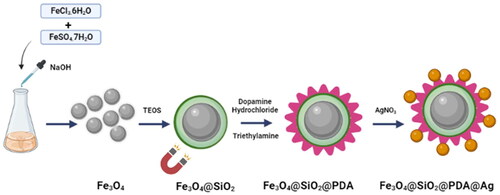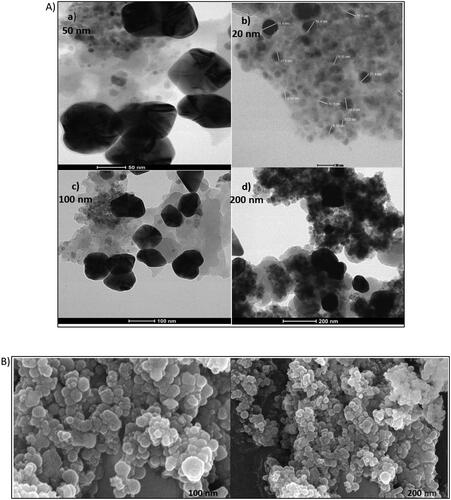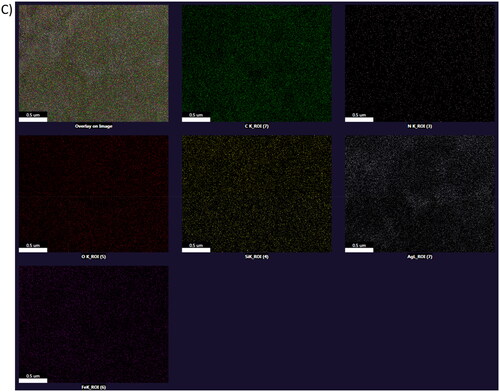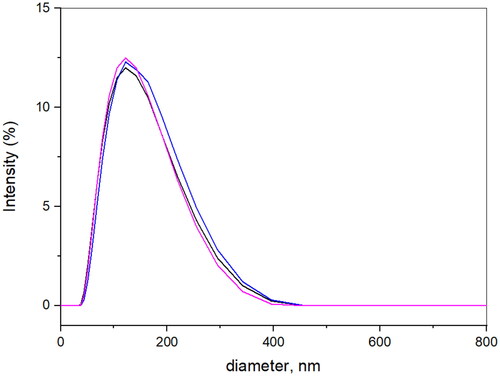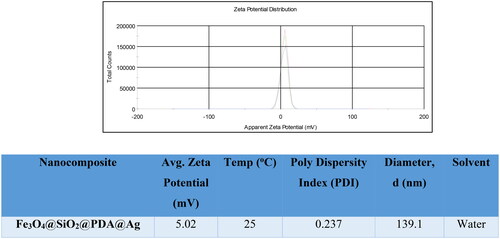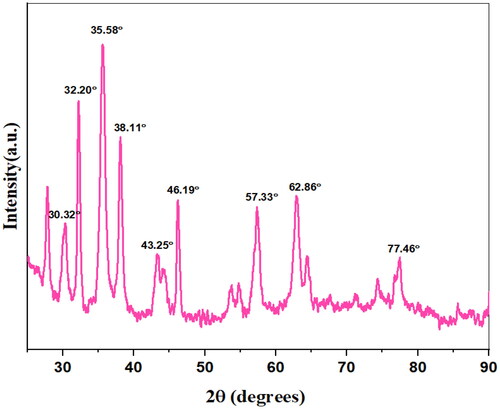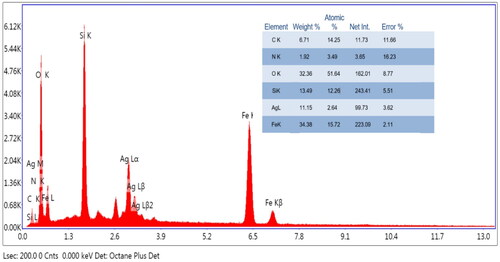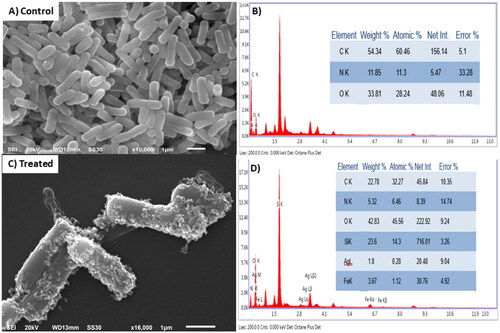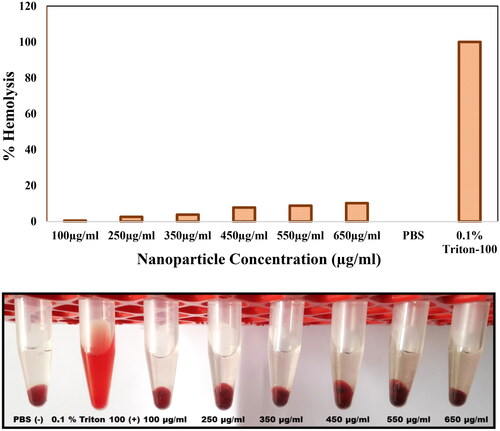Figures & data
Figure 4. FT-IR of (a) Fe3O4, (b) Fe3O4@SiO2, (c) Fe3O4@SiO2@PDA, and (d) Fe3O4@SiO2@PDA@Ag nanocomposite.
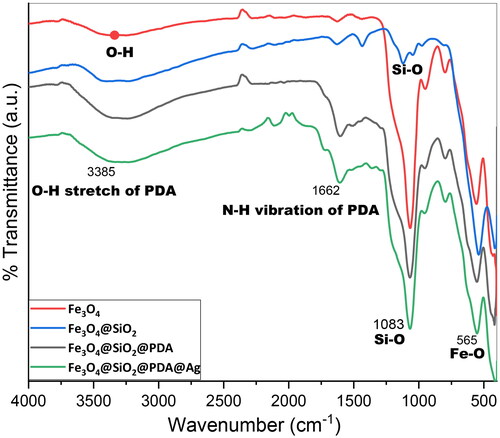
Figure 7. Stability data of Fe3O4@SiO2@PDA@Ag nanocomposite in water, PBS, acidic and basic buffers.
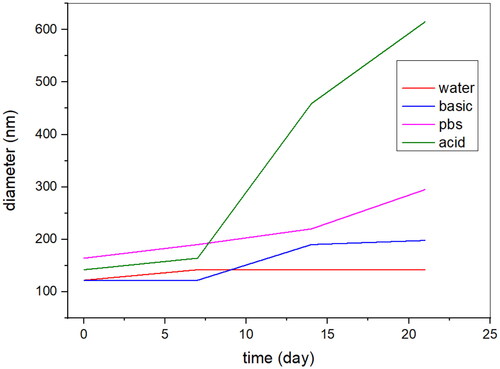
Figure 8. MTT assay at various concentrations on H1299 cancer cell line; (A) % cell viability of Fe3O4@SiO2@PDA (B) % cell viability of Fe3O4@SiO2@PDA@Ag C) comparison of % cell cytotoxicity of Fe3O4@SiO2@PDA and Fe3O4@SiO2@PDA@Ag.
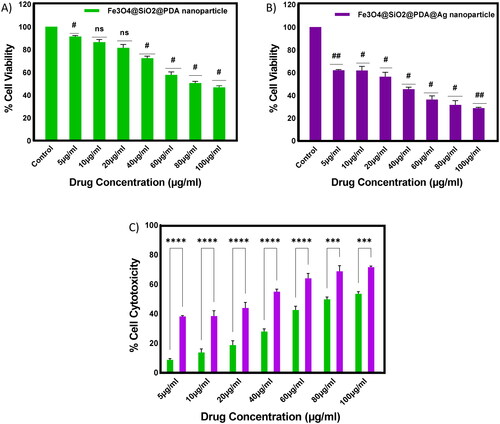
Figure 9. Microscopic images of the effect of the Fe3O4@SiO2@PDA@Ag nanoparticles on H1299 cancer cell line. (A) Untreated/control (B) at 50 µg/mL.
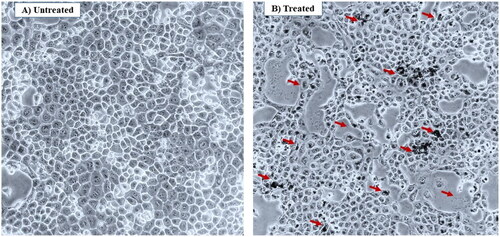
Figure 10. Cell apoptosis assay at different concentrations of Fe3O4@SiO2@PDA@Ag on H1299 cancer cell line (A) control; 0 µg/mL, (B) 20 µg/mL, (C) 30 µg/mL.
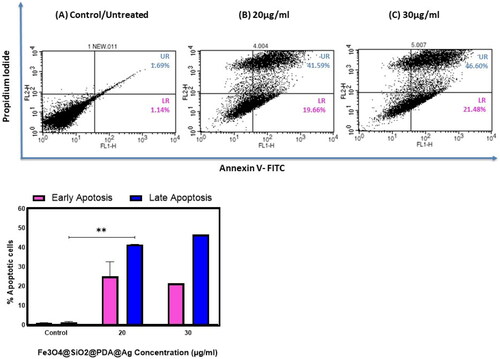
Figure 11. Antibacterial activity of Fe3O4@SiO2@PDA@Ag nanocomposites with increasing concentrations against (A) S. aureus and (B) P. aeruginosa.

Data availability statement
Raw data available on request.

